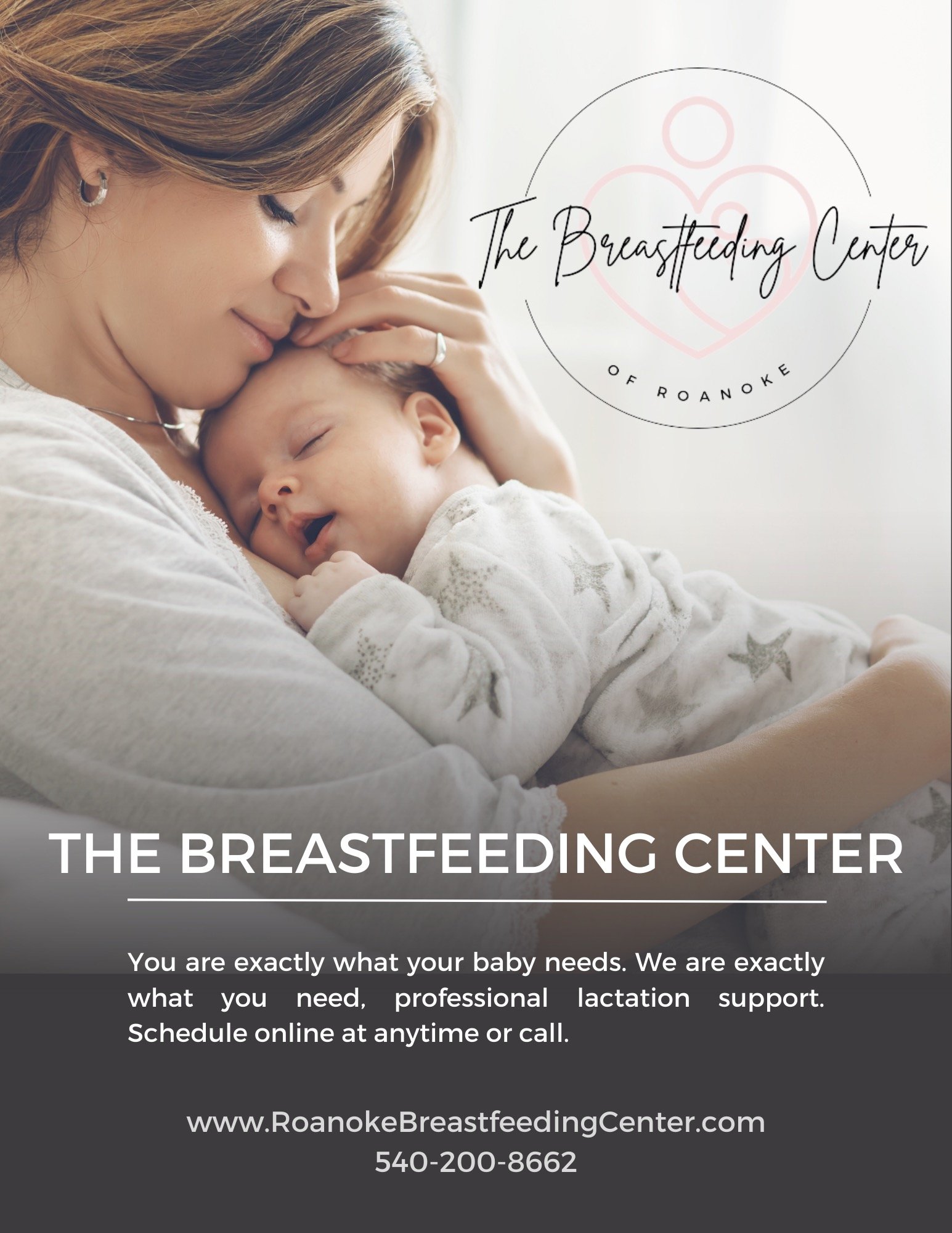It’s National Breastfeeding Month, did you even know that was a thing? As a lactation consultant, I think we get into it more than most. After all, I think that we probably get into breastfeeding more than most, am I right? We hear so much about breastfeeding. “Breast is best” they say, and the evidence would support that idea. Breastfeeding could possibly be considered a cornerstone of infant care, providing essential nutrients, fostering bonding, and supporting lifelong health and wellness. Yet, despite its known benefits, breastfeeding is surrounded by myths and misconceptions that can make it daunting for new mothers. Let’s dispel a few common breastfeeding myths that you may have heard.
Myth 1: Breastfeeding Is Easy and Natural One of the most pervasive myths is that breastfeeding is instinctive and should be effortless for families. We conjure up idyllic visions of families breastfeeding beside a flowing river with wind in their hair. Families that face challenges such as latching difficulties, sore nipples, low milk supply, or even an oversupply of milk often feel inadequate.
Truth: Natural Does Not Mean Easy Breastfeeding is a skill that both mothers and babies need to learn. Even after I began supporting breastfeeding families, I had breastfeeding challenges with my third child. I knew “all the things” but my baby didn’t and we had to learn together. Breastfeeding requires patience, practice, and often, professional help. As an International Board Certified Lactation Consultant, IBCLC, I am honored to be a health professional specializing in lactation and infant feeding. IBCLCs specialize in helping families establish and meet their infant feeding goals. There are several things that can cause difficulty in meeting goals during the breastfeeding journey. We can assess the problem and help families find personalized solutions. Sometimes there are physical challenges for the lactating parent, baby or both that create barriers to breastfeeding. We can connect families to other providers to offer a multidisciplinary approach to help overcome challenges. Overcoming difficulties builds confidence in families to feel empowered in their breastfeeding journey.
Myth 2: It’s just luck that determines if you make a lot of milk or if you don’t have enough. A perceived or actual low milk supply is a concern that perpetuates feelings of inadequacy and guilt. When it impacts a parent’s mental health it can lead to early cessation of breastfeeding.
Truth: Milk production is mostly impacted by demand at the breast, but maternal and infant factors can impact it as well, not luck. Increasing demand with more frequent feeding or using a breast pump can often help increase supply. However, there are maternal factors that influence milk supply, can include stress, improper latch, underlying health issues, and even some medications. Some infant factors that can impact milk supply are prematurity, challenges with oral function, tension, tongue ties, some physical limitations, and medical conditions or diagnosis. However, most are capable of producing enough milk with the right support. Lactation consultants can assess milk supply, suggest strategies to increase production, and help mothers optimize breastfeeding techniques, partner with other providers to optimize function and when needed provide work arounds to optimize strengths and down-play weaknesses. We can partner with maternal medical providers as well to explore underlying health conditions that may impact milk supply. It’s important to remember that every mother’s breastfeeding journey is unique, and seeking help is a sign of strength.
Myth 3: Breastfeeding is too demanding. Some families fear that breastfeeding will restrict their lifestyle, making it difficult to return to work, travel, or engage in social activities. This myth can discourage families from breastfeeding altogether.
Truth: It doesn’t have to be breast or bust. While breastfeeding does require time and commitment, a newborn will feed 8-12 times in 24 hours, it doesn’t have to limit your freedom. With the support of lactation consultants, mothers can learn to pump and store breast milk, enabling others to feed the baby when needed. The PUMP Act requires most employers to provide time and space to pump. Breast pumps, often provided at low or no cost by your health insurance company, make it easier to maintain milk supply on the go. Lactation care can also offer tips on how to integrate breastfeeding into your daily routine in a way that works for you and your family. Most families choose to offer both the bottle and the breast to encourage shared feeding responsibility within home and outside as well. Supplementation with artificial milk is also a choice that some families make to support breastfeeding. Infant feeding plans are rarely one-size-fits-all and can be individualized by an IBCLC based on a family’s goals and lifestyle.
Myth 4: You may not drink alcohol or take medications while breastfeeding. Families understand that alcohol, prescription medications, and over-the-counter medications impact the breastfeeding parent and therefore the breastmilk. Some choose lifesaving medications over breastfeeding, fearful of the risk they take without the medication or the risk to the baby if breastfeeding. Mothers fight through infections, sit out on toasts and celebrations and sometime stop breastfeeding temporarily, or indefinitely, due to concerns about medications and alcohol while breastfeeding.
Truth: Many medications are safe while breastfeeding and alcohol can be consumed in moderation. It is often difficult to know the risks and many providers, unsure of the risk, recommend not breastfeeding. (I see this all too frequently with medication given as part of surgical treatments and MRIs.)
As a lactation consultant, I can guide you, and your providers, to resources where you can learn about what specifically applies to you. The Infant Risk Center conducts research on the transfer of drugs into breastmilk. Families and providers alike, can search medication names online at www.infantrisk.com or call 1-806-352-2519 to better make an informed decision. As far as alcohol goes, the CDC states that, “Not drinking alcohol is the safest option for breastfeeding mothers. However, moderate consumption, meaning up to 1 drink in a day, is not known to be harmful to the infant.
La Leche League, Kelly Mom and the CDC all have information and resources about alcohol consumption while breastfeeding. Pump and dump advice given for when drinking alcohol, and even for certain medical procedures, is outdated advice that negatively impacts breastfeeding length and exclusivity. Trashthepumpanddump.org is another reliable resource to get updated information particularly if it has been suggested to you by someone to “pump and dump”.
Myth 5: You cannot breastfeed with inverted or flat nipples. Someone started this rumor and if I find out who it was, I’m going to punish them severely. But it’s been around a long time. I cannot tell you how many times someone has shared with me their desire to have breastfed but did not because they had (fill in the blank) nipples.
Truth: All nipples are good for breastfeeding. It’s breastfeeding not nipple feeding. As a lactation consultant, I want the baby latched to your breast not your nipple. Babies that latch onto the nipple have a shallow latch, frequently cause nipple damage and pain, and don’t take in as much milk as if they were latched on the breast. That’s not good. Yes, there may be some challenges with short, flat, inverted, large, long, small, or wide nipples. But we can overcome challenges and empower families to continue in their lactation journeys.
Myth 6: You cannot breastfeed with small breasts.
Truth: All breasts and chests are good for breastfeeding/chestfeeding. Size is not a defining factor in how much milk can be made or even the quality of the breastfeeding relationship. I have seen big breasts with little to no milk and little breasts with fountains of milk. In a somewhat related topic, cancer survivors and transgender parents can chestfeed when breasts have been surgically altered. As discussed before, a number of factors may determine the milk supply, but that does not diminish or define the breastfeeding relationship or deny the baby opportunity at the chest.
Myth 7: Breastfeeding Challenges Just Happen During the First Few Weeks
Truth: Breastfeeding is a journey and it is not uncommon to experience challenges along the way. But don’t let that discourage you! Be encouraged that there are many opportunities for support along the way as you and your baby grow and learn together. There are SO MANY milestones for your growing family during the first year of life and some of those can impact your lactation journey, from returning to work, to teething, to changes in sleep schedules, to introducing solids. Join a mom’s group, ask your pediatrician questions and of course, don’t be afraid to reach out to a lactation consultant, IBCLC.
It is my pleasure to see mommas grow in wisdom as babies grow in size. Breastfeeding is a beautiful and beneficial experience, but it’s not without its challenges. By dispelling the myths surrounding breastfeeding and embracing the support that lactation care provides, mothers can navigate their breastfeeding journey with greater confidence and success. Whether you’re a first-time mother or breastfeeding your fifth child, remember that help is available, and seeking it out is a powerful step towards dismantling myths, empowering families and ensuring a good start for your baby.
Erin VandeLinde is an International Board Certified Lactation Consultant and owner of The Breastfeeding Center of Roanoke. Erin has nearly 20 years of experience in supporting growing families and 14 years supporting lactating families. She is a momma to three breastfed babies that are now 10, 13 and 18 years old. Her husband of 21 years is no longer surprised when the conversation somehow ends up being about birth or breastfeeding when Erin’s around. Other favorite topics include faith, family and other cultures.




